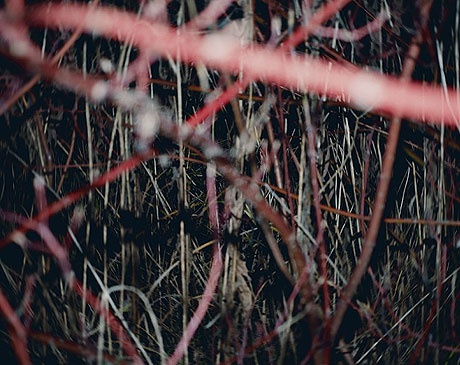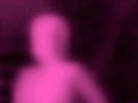women replicants (4) — language as a licking tool — Justyna Gruszczyk and Bianka Rolando

Women Replicants is the cycle of exhibitions at the Small Gallery, which presents the output of some young Polish women artists. The title expression includes a revolutionary potential of generating unknown values, and turning against the system that created them. The opposition to formatting into rational frameworks and stiff, logically justified divisions, as well as the need of strong subjectification of a woman author in cultural strategies become a measure of truthfulness of the recalled stories. The discovering of the sense which is included in details becomes a basis for creation of a new language in which the women artists are not outsiders, but find a place where they can speak about themselves with a shift in relation to the current fallocentric order. Reaching for intimate experiences, they become engrossed in texts, decomposed in toxic secretions of their own net.

‘Women Replicants’ summary book of the cycle of exhibitions This book has been planned as a documentation of an exhibition cycle which was staged at the BWA Contemporary Art Gallery in Katowice in 2010. The works...

women replicants (3) — minimal corrections — Alicja Karska and Aleksandra Went Works by Aleksandra Went and Alicja Karska seem to be resistant and tightly closed in their simplicity. Just like in the case of dreams about which we...

women replicants (2) — greenhouse conditions — Natalia Bażowska, Kinga Bella, Magdalena Starska, Tatiana Wolska Apart from precise tools, delving into author’s visions requires patience and attention; the reading on the run is losing sense. Ideal work conditions...

women replicants (1) — callousness — Dorota Buczkowska ‘Lilith’, ‘Interror’, … Callousness abolishes consciousness, pain and defensive reflexes. As an operation it results from the need of stiffening and protection from too intense...

In his legendary action How to Explain Pictures to a Dead Hare? Joseph Beuys is whispering something in the ear of a dead hare carried in his arms. We don’t know what he is saying. According to the title, he is explaining a picture to it. Usually it is hard to stop listening to an unintelligible speech as long as it sounds melodious. What was to be encoded vanishes slowly in words that are joining one another. The experiment thins out.
Justyna Gruszczyk and Bianka Rolando have much to tell. In a bulimic reflex, they are sucking details of the surrounding world. Being aware that such a way of feeding with reality has to find an outlet, they are spinning their own sedative tales. They tell them first of all to themselves. In her White Book, Bianka writes, I’d only put a child’s bib, because I could start to slobber in result of the excess of words… Her Polish-Italian origin extorted quick translation from one language to the other. Her fascination with the borderland of speaking, which includes growling, smacking and singing, results from this awareness of the traps that lie in wait for her in the process of translation. This attitude allows her to disarm all the subsequent media which she uses. She pays attention to words, knowing that the sweet ones can decay the teeth, and the ugly ones should be rubbed out.
This time she takes notes and makes drawings at the gallery, leaving the charcoal and honey-dipped dresses on the floor. It looks as if her preparations to something were stopped, and her hysterical story interrupted in mid-flow. Bianka’s hyperactivity illustrates the range and scale of untold stories. The patterns that can get her language in order remain hidden.
As a little girl, Justyna Gruszczyk didn’t like to go to a place overgrown with raspberries. Allegedly a monster with a soft and warm fur lay in wait there. Surely it was huge. Justyna would want to be scared by it again. In her smelling works she often uses the motive of surfeit, baroqueness, and fullness at the limit of satiety and decomposition. She recalls stories, the protagonists of which dream about stopping the time. When their dreams fulfil, they are happy at first, because they can eat candies freely in every shop without control of the adult. But later they become horrified that they would stay in the stopped time forever and nobody could save them. The childhood is haunting her. In one of her tales she must return to an unclosed room inside her, entering by a little skin fold in her heel. The protagonist ‘…was descending very quickly along the shinbone, like along a slide. Then she was resting a while on the kneecap, and after that would continue her slide along the thighbone. The greater trochanter would throw her up like a jump. She would fall softly onto the ovary, from where through the fallopian tube she would reach the uterus, where usually she would take a brief nap on the fleecy red large pillows. Then she would continue, grasping the internal muscles of abdomen and climbing them like rocks. Then again she would get to the lung, from where the door could be seen. But opening the door wasn’t easy, because the monster was on guard at the door. He was red and bloody, and beating loudly and going pit-a-pat with all his might. His name was Heart. The princess has often wondered what would has happened if he had killed her. And how would she look like outside her, if she died inside her. Each time, however, she would manage to escape — when the monster tensed himself, preparing to leap, the princess would get to the door in one nimble bound, disappearing behind it before he could reach her. Each time the mysterious room was different. There she was finding trunks, flying carpets, old manuscripts, dresses, masks, books, and thousands of other things.’
Justyna finds a key to these often dangerous returns in the use of the sense of smell. During drawing the air in and out, she is present in subsequent places, building the trust in them. For the exhibition at the small gallery she prepares a dark room with a soft floor, filled with an intense animal smell. She reproduces the circumstances which had accompanied her childish fears with nostalgia.
The deficiency and unfinished thread sharpen the appetite. Gruszczyk and Rolando are leaving peelings, sheds, dresses, blown eggs, as well as phrasebooks which are strewn into fragments. The possessive character of their installations requires an unequivocal opposition from the part of a viewer; otherwise it could appropriate and terrorize him. You should be careful or, on the contrary, you can express your opposition, allowing to be drawn and play according to the rules determined by the artists. In the end it appears that every use of the tongue has the curative character for the speaking one, even if it is connected with an inevitable operation of pinning and sterilisation.
Curator: Marta Lisok




